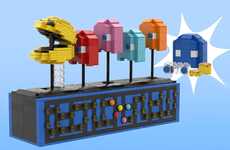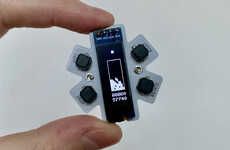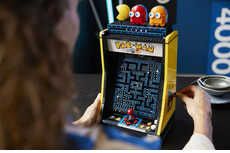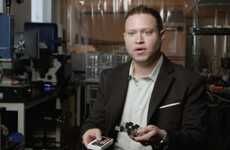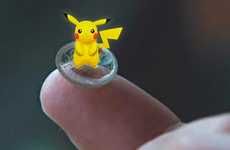
This Scientific Game Makes Micro-Organisms Go Through a Pac-Man Maze
Riley von Niessen — July 7, 2016 — Tech
A group of Norwegian researchers from the 'Institute of Micro and Nano Systems Technology' created a scientific game that is modeled on the popular retro arcade game Pac-Man.
The minuscule maze measures in at just one-millimeter wide, with researchers needing a powerful microscope to see what's happening in the scientific game. Instead of the classic arcade characters, the researchers used single-celled organisms that go through the boundaries. The damaging characters to watch out for are represented by multi-celled organisms, who have the power to destroy their smaller counterparts.
Though the experiment was modeled after Pac-Man, the researchers don't actually have any control in the movements of the minuscule creatures, using the project to study the different behaviors of the organisms within the maze. With this, scientists are able to better understand how the subjects act in a setting that's completely unnatural to them.
The minuscule maze measures in at just one-millimeter wide, with researchers needing a powerful microscope to see what's happening in the scientific game. Instead of the classic arcade characters, the researchers used single-celled organisms that go through the boundaries. The damaging characters to watch out for are represented by multi-celled organisms, who have the power to destroy their smaller counterparts.
Though the experiment was modeled after Pac-Man, the researchers don't actually have any control in the movements of the minuscule creatures, using the project to study the different behaviors of the organisms within the maze. With this, scientists are able to better understand how the subjects act in a setting that's completely unnatural to them.
Trend Themes
1. Scientific Gaming - Developing scientific games that utilize micro-organisms as characters, allowing researchers to study their behaviors in unnatural settings.
2. Nano-technology Research - Using powerful microscopes and nano-systems technology to observe and analyze the behavior of single-celled organisms in miniature mazes.
3. Retro-inspired Science - Bringing nostalgia and entertainment value to scientific experiments by replicating popular retro arcade games with microscopic organisms.
Industry Implications
1. Biotechnology - Exploring the practical applications of micro-organisms in fields such as medicine, agriculture, and environmental science.
2. Gaming - Incorporating scientific concepts and real-world data into gaming experiences to engage and educate players.
3. Microscopy - Advancing the capabilities of microscopes and nano-systems technology to enable researchers to observe and manipulate minuscule objects with precision.
3.5
Score
Popularity
Activity
Freshness



